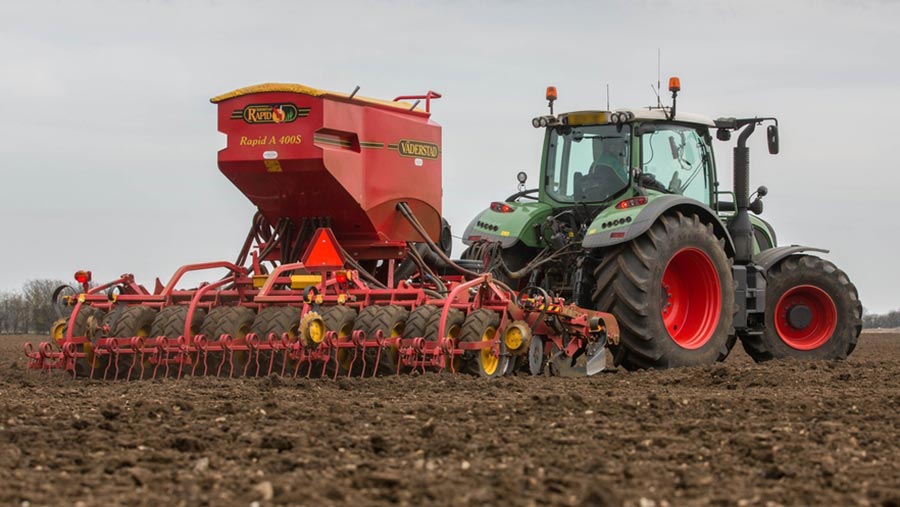Spring barley growers urged to raise seed rates if drilling delayed
 © Tim Scrivener
© Tim Scrivener Spring barley growers are being encouraged to increase their seed rates if drilling is delayed and seed-beds are not ideal after very wet winter weather.
Drilling is likely to be pushed back this spring due to cold and wet soil, and even in early drilling areas such as the South Downs spring drilling could be two weeks away.
Mike Thornton, agronomist with advisory group ProCam, says growers should not rush to drill in poor conditions and they need to hold fire until soils dry and warm up and then raise seed rates.
See also: 7-step guide to growing quality malting barley
“Growers should be thinking of pushing seed rates up as they can expect greater losses due to poor soil conditions,” he tells Farmers Weekly.
For early drilling into good seed-beds, growers might look at a seed rate of 300-325 seeds/sq m, but if delayed into late March or early April the rate might be pushed up to 350-400 seeds/sq m, he says.
Better seed-beds
In addition, growers need to hold back from drilling too early as good seed-beds will give better seed to soil contact and so good conditions for residual blackgrass herbicides to work.
If growers have already ordered their seed then he suggests they should still increase the seed rate, but leave grass margins around their fields and so drill a smaller area.
He suggests growers should avoid the temptation to cut nitrogen fertiliser rates as newer malting varieties, such as Planet, response well to nitrogen and growers can push them harder.
Growers should also consider using biostimulants, such as phosphites or trace elements, help rooting as they performed well when plants are under stress, such as last season due to the dry spring.
Fungicide programmes
He also suggests growers stick with a two-fungicide programme as there are increased problems with diseases like ramularia and there is the fear that the disease could hit specific weights.
In a season when the AHDB Early Bird survey suggests spring barley drillings are estimated to be up 7% at 803,000ha, Mr Thornton warns that a big harvest could mean prices drop.
“I would advocate a two-spray approach as there is likely to be a lot of barley around at harvest and growers do not want to be faced with low specific weights and then looking at feed prices,” he says.

